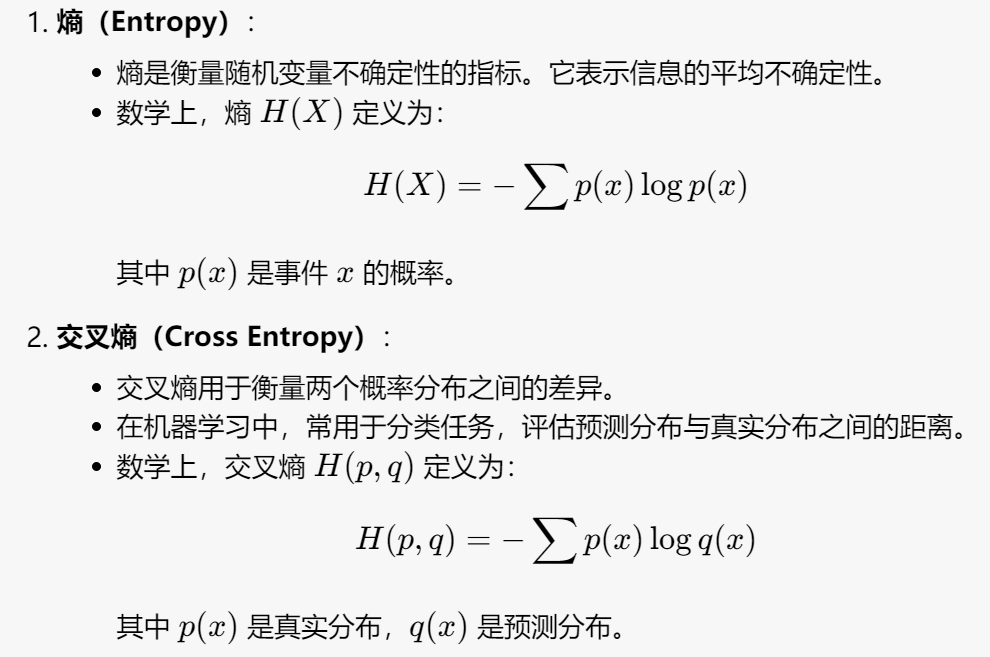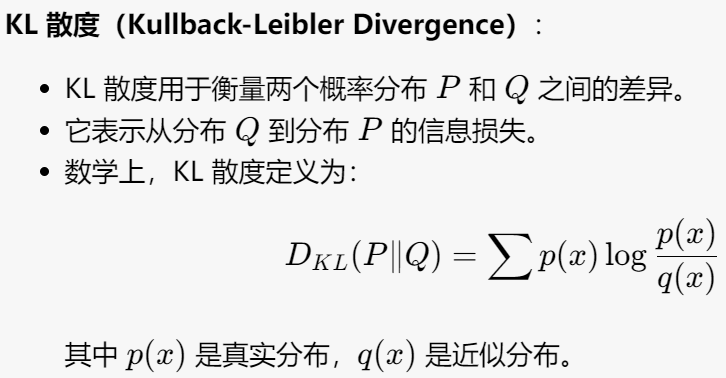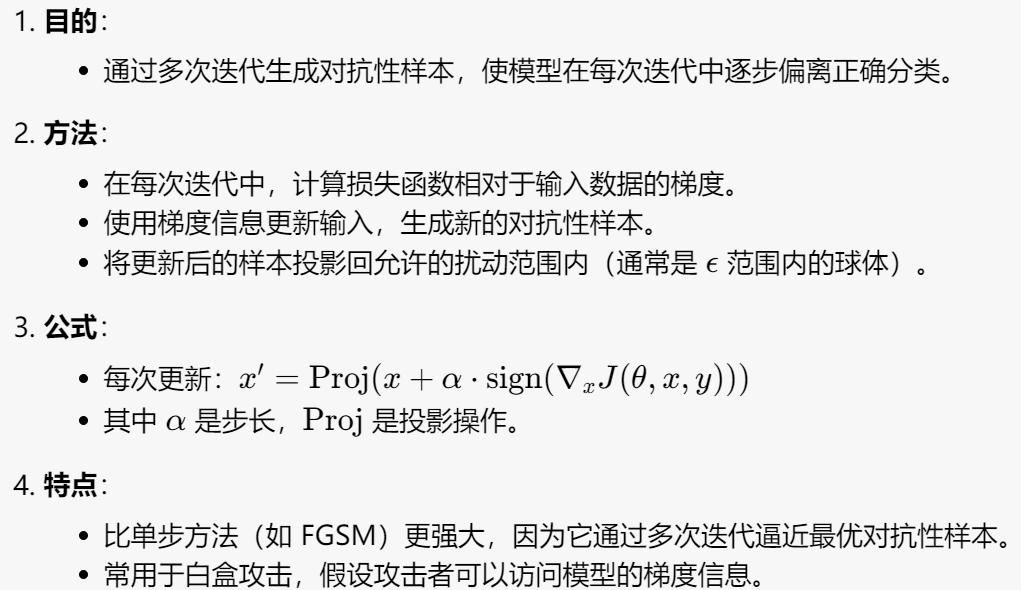Lecture by prof. Ding Zhao¶
fundamentals about CV¶
关键概念¶


通常情况下,交叉熵在训练分类模型时常用作损失函数,因为它能有效地衡量模型预测的准确性。KL 散度在机器学习中常用于优化模型,使得预测分布尽可能接近真实分布。
CNN¶
- 卷积操作及对应的output大小计算 - reduce size
- Pooling操作 - reduce size and select the most important feature (filter the noise)
- dropout - 随机舍弃部分神经元,提高稳定性
以上具体内容见dip笔记和prelearning
Deep Learning Structure¶
一些基本的结构见之前线上课程的笔记。
- Point net (3D point cloud) - 用于处理 3D 点云数据的深度学习架构。它能够直接对点云进行分类和分割,而不需要将其转换为其他形式(如体素或网格)。
Feature Visualization¶
通过可视化网络中的特征,可以揭示模型在不同层次上学习到的模式和特征。
Deconvnet¶
通过逆转卷积过程来理解和解释模型的行为,可以揭示哪些输入特征对特定神经元的激活有贡献。
"Deep Dream"¶
"Whatever you see there, I want more of it!"
-
enhance deeper layers
-
add multiple channels
Adversarial attacks¶
- 通过对原始输入施加微小且有意的扰动生成。
- 这些扰动通常对人类不可察觉,但会导致模型错误分类。
poisoning-type adversarial attacks¶
通过污染训练数据来影响机器学习模型的性能,在训练阶段引入恶意数据,使模型在测试阶段表现不佳。
Evasion-type adversarial attacks¶
攻击者通过对输入数据进行微小的扰动,使模型在测试或使用时产生错误输出。
-
noise attack - 给输入数据增加少量noise
-
boundary attack
-
从一个已被错误分类的样本开始,逐步向目标样本逼近。
- 在每一步中,调整样本以保持在决策边界之外,同时尽量接近原始输入。
-
通过迭代优化,逐步减少对抗性样本与原始样本之间的差异。
-
FGSM (Fast Gradient Sign Method)

- projected gradient descent

Physical-type adversarial attacks¶
Defending against adversaries¶
- min-max loss
- //todo
- randomized smoothing - make model more robust, push the decision boundary of \(f\) further away from the training data points.